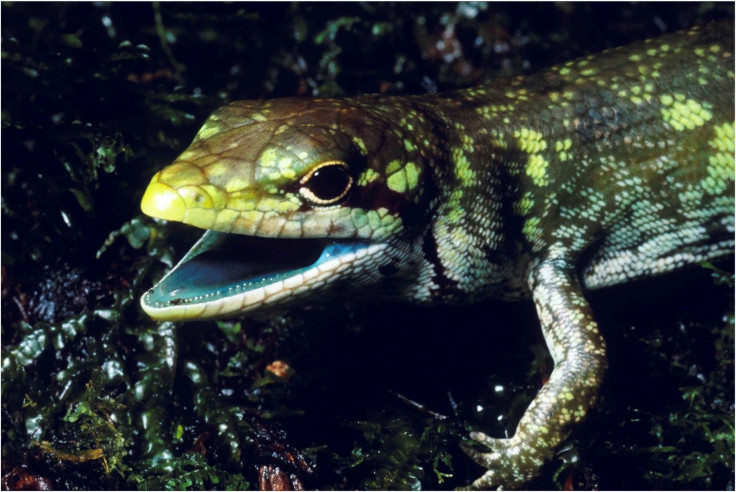Weird Lizards In New Guinea Have Green Blood, Muscles, And Bones

A strange family of lizards living in New Guinea has got toxic, lime green blood running through its veins, a weird physiological feature that scientists have not been fully able to explain.
The feature gives the skinks, called Prasinohaema, their striking green-color. In fact, its concentration is so high that not just lizards’ muscles, their bones, tongue, and even mucosal tissues also appear green in color.
According to scientists, all of this happens due to high levels of biliverdin, a green bile pigment which overshadows the crimson coloration of red blood cells and is toxic to humans. It can cause jaundice, but surprisingly, the lizards do not appear harmed, despite hosting 40 times the level of the toxin compared to what would be harmful to humans.
"In addition to having the highest concentration of biliverdin recorded for any animal, these lizards have somehow evolved a resistance to bile pigment toxicity,” lead author Zachary Rodriguez from Louisiana State University said in a statement. So, how did they evolve to have all the green bile and are there any visible benefits of the toxic blood?
To understand the evolutionary history of the creatures and their green blood, Rodriguez and his colleagues launched an expedition to New Guinea. There, they genetically examined 51 species of skinks, six of which had green blood with two being completely new to science. The results of the tests revealed that Prasinohaema lineages evolved to have green blood four separate times and all of their ancestors had red blood.
"We were excited by the complex history of these animals and surprised by the breadth of green-blooded lineages across lizards," Rodriguez said.
The finding led the researchers to posit that green blood evolved independently in different lizards and may actually offer adaptive value or health benefits to the creatures. Several studies in the past have also shown that the bile pigment can act as an antioxidant and prevent diseases during in vitro fertilization.
That said, further studies will still be required to determine the exact function of the mysterious green blood. As a similar liver product, bilirubin, is known to be toxic to human malaria parasites, the group is also conducting studies to see how the green bile pigment from these lizards affects malaria and other parasites. They are also planning to identify the genes responsible for their blood.
“Understanding the underlying physiological changes that have allowed these lizards to remain jaundice-free may translate to non-traditional approaches to specific health problems," Rodriguez concluded.
The study, titled “Multiple origins of green blood in New Guinea lizards,” was published May 16 in the journal Science Advances.
© Copyright IBTimes 2024. All rights reserved.





















